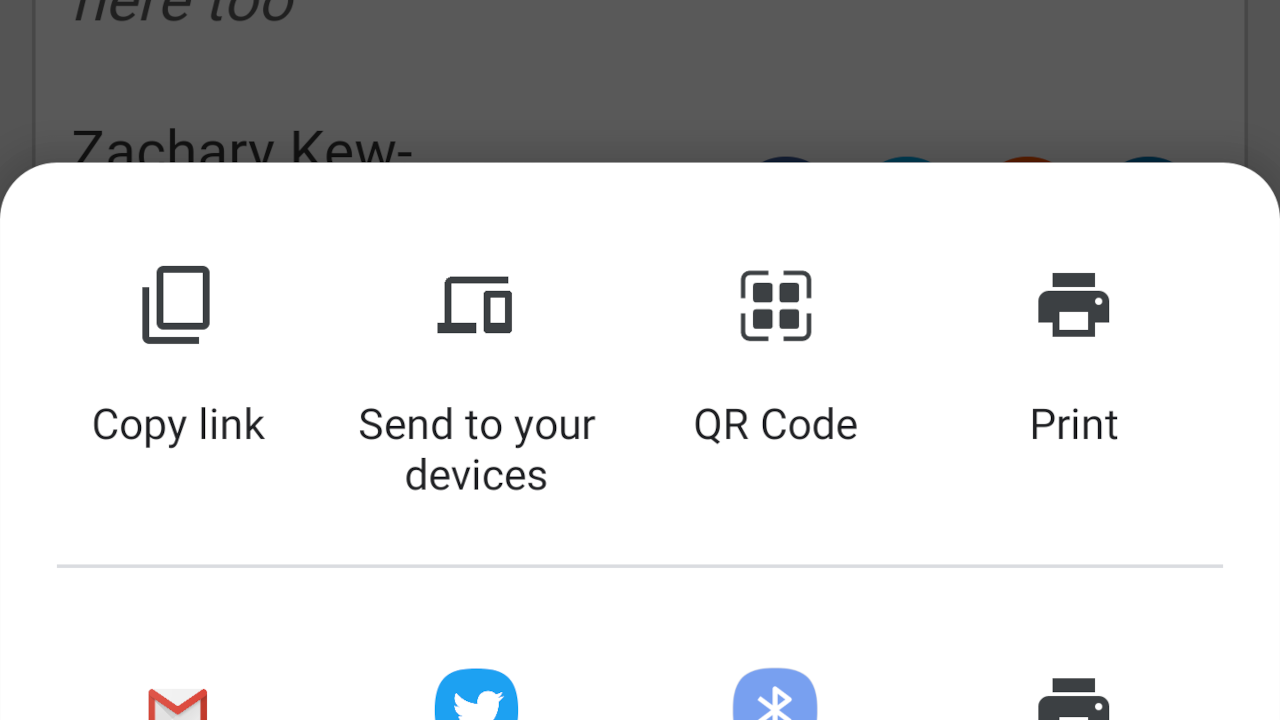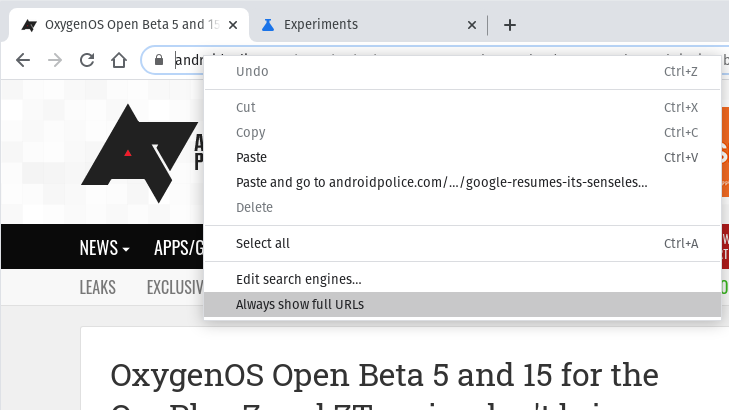Read update
- 64-bit correction
It has been about a month since Chrome 85 appeared in the Beta Channel, and now Google is starting to roll it out to the stable branch. There aren't many easily-visible changes, but as the old Transformers theme says, there's more than meets the eye.
New share dialog
Google first started testing a new share dialog in Chrome 84, but it's only starting to roll out widely with the release of Chrome 85. It wasn't enabled by default for me yet, so I had to set both chrome://flags/#sharing-hub and chrome://flags/#share-qr-code (paste those in the address bar, clicking won't work) to 'Enabled' to get the new interface.
Once you tap the Share option in the overflow menu (or the toolbar), instead of Android's default share sheet, you get a horizontally-scrolling menu with a few Chrome-specific options displayed at the top. There are quick launch buttons for copying the current link, sending it to other Chrome browsers under your Google account, creating a QR code, or printing the page. You also get the option to download the QR image, or scan one from another device. You can scan the QR code with any app (including the default Camera on many Android devices), not just Chrome.
Below the Chrome buttons are shortcuts for a few commonly-used apps, followed by a 'More' button that opens the Android default share sheet. I'm glad to see that I won't have to horizontally scroll through 50+ icons on Chrome, like I have to do on Google Photos.
Omnibox changes
Google has tried on and off for years to hide full URLs in Chrome's address bar, stemming from some research that claims phishing pages aren't as effective when only the current site domain (e.g. google.com, androidpolice.com) is shown. Chrome 85 includes two new feature flags that hide the full URL path, but they are only being tested on desktop platforms for now.
There are two experiments currently being tested: one that hides the full path until the mouse hovers over the address bar, and one that hides the path until the page is interacted with. Neither option is enabled by default for everyone on Chrome 85 — Google will likely turn them on in limited tests to see which works best.
https://gfycat.com/wickedlimitedbarracuda
After the feature flags first appeared in Chrome Canary/Dev last month, Google revealed more details on the Chromium Bug Tracker. "We think this is an important problem area to explore because phishing and other forms of social engineering are still rampant on the web," a Chromium developer said, "and much research shows that browsers' current URL display patterns aren't effective defenses. We're implementing this simplified domain display experiment so that we can conduct qualitative and quantitative research to understand if it helps users identify malicious websites more accurately."
However, making the web address less important, as this feature does, benefits Google as a company. Google's goal with Accelerated Mobile Pages (AMP) and similar technologies is to keep users on Google-hosted pages as much as possible, and Chrome for Android already modifies the address bar on AMP pages to hide that the pages are hosted by Google. Modifying addresses on the desktop is another step towards making them irrelevant, which could hurt the decentralized nature of the internet as a whole.
On the bright side, Google confirmed that the option to always show full URLs will be available by right-clicking on the address bar, at least by the time it rolls out to everyone. If you don't see it right now, go to chrome://flags/#omnibox-context-menu-show-full-urls and set the highlighted flag to 'Enabled'.
Other changes
As always, this update includes changes for both users and developers. Here are some smaller changes included in Chrome 85:
- Support for AVIF image decoding (from the same group that developed the AV1 video codec) is now enabled by default, but only on desktop platforms.
- App shortcuts for PWAs are now enabled by default on desktop platforms. The feature went live on Android in Chrome 84.
- The Web Bluetooth API has received a few improvements, like a new event listener for advertising packets and a new getDevices() method.
- Chrome is now following Safari and Firefox by deprecating the old AppCache API.
- Dragging and dropping files on the desktop has been improved.
- Chrome now auto-upgrades images served over HTTP to HTTPS where possible. Audio and video content has been auto-upgraded since Chrome 80.
- Chrome on the desktop now has tab previews and a more touch-friendly interface.
- The new Profile Guided Optimization feature should slightly improve browser performance.
Download
The APK is signed by Google and upgrades your existing app. The cryptographic signature guarantees that the file is safe to install and was not tampered with in any way. Rather than wait for Google to push this download to your devices, which can take days, download and install it just like any other APK.
UPDATE: 2020/08/27 8:47am PDT BY CORBIN DAVENPORT
64-bit correction
This post previously stated that Google was rolling out 64-bit support on Android, but it seems to be limited to the beta channel for now.
Source: Chrome Platform Status, Chromium Blog, Google Blog


